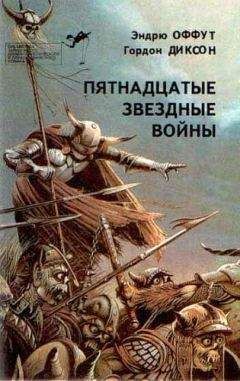Герберт Шиллер - Манипуляторы сознанием
56 Litwak. "Fantasy", p. 28.
57 "Los Angeles Times", 16. XII. 1966.
58 Robert Shayon. Entertainment. — "Performance", N 3, VII/VIII, 1972, p. 91.
59 Annual Report..., p. 21.
60 Ariel Dorfman and Armand Mattelart. Para Leer Al Pato Donald. Valparaiso, 1971.
61 A. Mattelart. Mass Media In the Socialist Revolution; The Experience of Chile. — Communications Technology and Social Policy. New York, 1973.
62 "Los Angeles Times", 1. VI. 1972.
63 Дисней сказал однажды: "У меня не бывает подавленного настроения, и я не хочу, чтобы оно у меня появилось. Я счастлив, просто очень, очень счастлив". (/. Anthony Lukas. "The Alternative Life — Style of Playboys and Playmates", — "New York Times Magazine", 11. VI. 1972.).
64 Litwak. Fantasy, p. 27.
65 M. B. Grosvenor. Walt Disney. Genius of Laughter and Learn- ing. — "National Geographic", VIII. 1963, p. 158.
66 Mott. A History of American Magazines, p. 632.
67 James L. C. Ford. Magazines for Millions, Carbondale, 1969, pp. 57—58.
68 "Reader's Digest at the White House". — "New York Times", 29. I. 1972.
Глава пятая1 Harwood L. Childs. Public Opinion: Nature, Formation and Role. Princeton, 1965, p. 1.
2 Marshall A. Caskey. Polls: Critics and Proposed Controls, Freedom of Information Center Report N 220. Columbia, 1969, p. 3. Предположительно насчитывается тысяча американских фирм по опросу общественного мнения. (Stephen Isaacs. The Pitfalls of Polling", Columbia Journalism Review, V/VI. 1972, p. 34.)
3 Erik Barnouw. A History of Broadcasting. New York, 1968.
4 Paul F. Lazarsfeld. Some Problems of Organized Social Research. — "The Behavioral Sciences: Problems and Prospects", Boulder, VIII, 1964, p. 11.
5 Paul B. Sheatsley. AAPOR Times 21. — "Public Opinion Quarterly" 32, 1968—69, p. 463.
6 Hadley Cantril. The Human Dimension: Experiences in Policy Research. New Brunswick, 1967, pp. 24—30—31.
7 Lazarsfeld, Some Problems, p. 11.
8 H. Cantril. Human Dimension, pp. 35—37.
9 George Gallup, Jr., "The Challenge of Ideological Warfare", in Propaganda and the Cold War. Washington, 1963, pp. 54—56.
10 Cantril. Human Dimension, Chs. 1, 2.
11 "Political Pollsters Head for Record Activity in 1968", Congressional Quarterly Fact Sheet, 3. V. 1968, p. 1000.
12 George Gallup, Jr. "Image of the United States Abroad in 1969: A Report", in The Case for Reappraisal of U. S. — Overseas Information Policies and Programs. N. Y., 1970, p. 18.
13 Richard L. Merritt. The USIA Surveys: Tolls for Policy and Analysis, in Western Europe arid Perspectives on International Affairs. New York, 1968, p. 6. Возможно, здесь применимы слова Пауло Фрейре: "В своем стремлении господствовать, переделать других сообразно собственным моделям и образу жизни захватчики хотят знать, как оценивают действительность завоеванные ими люди, но лишь для того, чтобы сделать свое господство еще эффективнее". (Paulo Freire. Pedagogy of the Oppressed, pp. 150—151.)
14 H. Cantril. Human Dimension, pp. 35—49. Кэнтрил пишет: "Очевидно, в демократии, подобной нашей, ни один президент не может добиться осуществления своей политики, пока народ не заинтересуется этой политикой и не поймет ее смысла" (р. 69).
15 Harold Mendelsohn and Irving Crespi. Polls, Television and the New Politics. Scranton, 1970, p. X.
16 Marylin Bender. Market Research. — "New York Times", 29. VIII. 1971. Jack J. Honomichl. Big Business Snaps Up 22 Top Research Firms. — "Advertizing Age", 20. X. 1971, pp. 1, 83.
17 Richard Hodder—Williams. Public Opinion Polls and British Politics. London, 1970, pp. 9—14.
18 Roper Research Associates. "A Ten—Year View of Public Attitudes Toward Television and Other Mass Media, 1959—69". New York, 1969.
19 "The Perils of Polling", Transaction 81, N 9-10, VII/VIII, 1971, p. 8.
20 John D. Morris. No Fault Poll Results Disputed. — "New York Times", 24. I. 1972.
21 Richard Halloran. Tactics Disputed in Fight to Win Release of P. 0. W*s. - "New York Times", 7. VI. 1971.
22 Cantril. Human Dimension.
23 Report of the Standards Committee, American Association for Public Opinion Research, 1970, Chapter 7, pp. 165—166.
24 Jerom Johnston and Gerald G. Bachman. Young Men Look At Military Service. — "Youth In Transition", N 193. The Univ. of Michigan, VI. 1970.
25 John Herbers. Servey Finds Fear of U. S. "Break—Down". — "New York Times", 27. VI. 1971.
26 Richard L. Merritt, Ellen P. Flerlage, Anna J. Merritt. Political Man in Postwar German Education. — "Comparative Education Review", 15. X. 1971, p. 4.
27 Milton Rokeach. The Role of Values in Public Opinion Research. — "Public Opinion Quarterly", 32, N 4, (Winter 1968—69), p. 549.
28 "Chicago SunTimes", 26. VI. 1968.
29 Mendelsohn and Crespi. Polls, TV, Politics, pp. 40—41.
30 H. Cantril. Human Dimension, p. IX.
31 George Gallup, Jr. A Guide to Public Opinion Polls, Prince- ton, 1948, pp. 3, 7.
32 Robert M. Smith. Youth Found Cool to Career in F. B. I. — "New York Times", 15. II. 1972.
38 Harwood L. Childs. Public Opinion, p. 1.
34 Bernard C. Cohen. The Relationship Between Public Opinion and Foreign Policy Maker. — "Public Opinion and Historians" Detroit, 1970, p. 70.
35 Kaarle Nordenstreng. "Broadcasting Research in Scandinavian Countries", International Studies of Broadcasting. Tokyo, 1971, p. 257.
36 Anthony Wilden. System and Structure: Essays in Communica- tion and Exchange. London, 1972, p. XX.
37 Alex S. Edelstein. Ideas In Search of Methodologies In International Communications, paper for Raymond В. Nixon Symposium. Minneapolis, IV. 14—16, 1971.
38 Paul Lazarsfeld. The Discussion Goes On. — "Public Opinion Quarterly", 9 (Winter 1945—46), p. 404.
39 Mendelsohn and Crespi. Polls, TV, Politics, p. 314.
Глава шестая1 "Advertizing Age", 19. II. 1973, p. 64.
2 "What a Multinational Company Is". — "New York Times", 19. VI. 1972.
3 "International Advertiser 10", N 1, 1969, p. 25.
4 "The Uncertain Mirror", Report of the Special Senate Commit- tee on Mass Media, vol. 1. Ottawa, 1970, p. 246.
5 "Advertising Age", 27. III. 1972.
6 "Broadcasting", 1. IX. 1969.
7 "Who's Where Around the World", Printers' Ink (now Marketing/Communications), 9. VI. 1967, pp. 21—30.
8 Ralph Leezenbaum. JWT: Mystical Melding of the Swinging and the Staid. — "Marketing/Communications", III. 1970, pp. 22— 30.
9 "White House Branch of J. Walter Thompson?" — "Broad- casting", 24. II. 1969, p. 36.
10 "The Financial Times" 17. X. 1969.
11 "Profile of Agencies Around the World", — "Printers' Ink" (now "Marketing/Communications"), 9. VI. 1967.
12 Robert P. Knight and John D. Stevens. Articles on Mass Communications in U. S. and Foreign Journals, a Selected Annotated Bibliography. — "Journalism Quarterly 47", N 1, 1970, pp. 198—199.
13 Marcel Niedergang. Double—Edged Reform for Perusian Press. — "Le Monde", 1. IV. 1970, p. 3 (еженедельное издание на англ. языке).
14 "Profile of Agencies Around the World".
15 "Public Relations Quarterly", Winter 1970—71.
16 William A. Durbin. International Public Relations. — Cur- rent Thoughts in Public Relations: A Collection of Speeches and Articles. New York. 1968, pp. 120—121.
17 "International Public Relations». "Gallatin International Business Aids" VI. 1967.
18 "Public Relations Today". — "Business Week", 2. VII. 1960, p. 42.
19 Fritz Macklup. The Production and Distribution of Knowledge in the United States. Princeton, 1962, p. 271.
20 "Public Relations Today", p. 41.
21 Hugh C. Hoffman and Robert C. Worcester. The International Scene: A Review of Current Practices. — "Public Relations Quarerly 13", N 1, 1968, pp. 12, 17.
22 "Public Relations Today", p. 42.
23 "International Public Relations, Gallatin International Business Aids", VI. 1967.
24 Harry Muller. Latin. America: How U. S. Prestige Stack Up. — "Public Relations Journal 22", N 6, 1966, p. 20.
25 Hill and Knowlton International, Handbook on International Public Relations. New York, 1968.
26 Arthur Reef. The Satellite Beams Its First PR Programm. — "Public Relations Jornal 25", N 11, XI. 1969, p. 17.
27 T.J. Ross. Some Observations on Public Relations Progress. — "Perspectives in Public Relations". Norman, 1966, p. 20.
28 "Gallup Organisation". — "International Opinion Trends". Princeton.
29 Arthur С. Nielsen. Greater Prosperity Through Marketing Research: The First 40 Years of the A. C. Nielsen Company. New York, 1964, p. 34.
30 Bradford's Directory of Marketing Research Agencies and Management Consultations in the United States and the World, 1965—1966, Fairfax, p. 44.
31 V. Lewis Bassie. Question That Survey. — "Illinois Business Review 10", N 11, 1953, p. 2.
32 Edith Marie Bjorklund. Reseach and Evaluation Programs of the U. S. Information Agency and the Overseas Information Center Libraries. — "Library Quarterly 38", N 4, X. 1968, p. 414.
33 Robert C. Albrook. Europe's Lush Market for Advice—American Preferred. — "Fortune", VII. 1969, pp. 128, 131.
34 Henry Giniger. Westerners Filling a Technology Gap in Algeria. - "New York Times", 24. VI. 1971.
35 D. S. Greenberg. Consulting: U. S. Firms Thrive on Jons for European Clients. — "Science", 29. XI. 1968, p. 986.
36 Ibid., p. 987.
37 Clem Morgello. The Stock Market's Foreign Market. — "Newsweek", 27. I. 1969, p. 82.
38 New York Stock Exchange Directory, 1969. New York, pp. 697— 698.
39 Tom Sutton. A Profits' Prophet. — "International Advertiser 10", N 2, 1969, p. 6.
40 Robert Sarnoff. Toward a Global Common Market of Communications (Речь, произнесенная перед сотрудниками Американской торговой палаты во Франции и членами Американского клуба в Париже, II. 12. 1970).
Глава седьмая1 Pete Drucker. The Age of Discontinuity. New York, 1968, p. 276.
2 Ibid.
3 Ibid., p. 277-278.
4 Edward H. Carr. The New Society, Boston, 1957, p. 53.
5 Daniel Bell. The Balance of Knowledge and Power. — "MIT Technology Review", VI. 1969, pp. 43—44.




